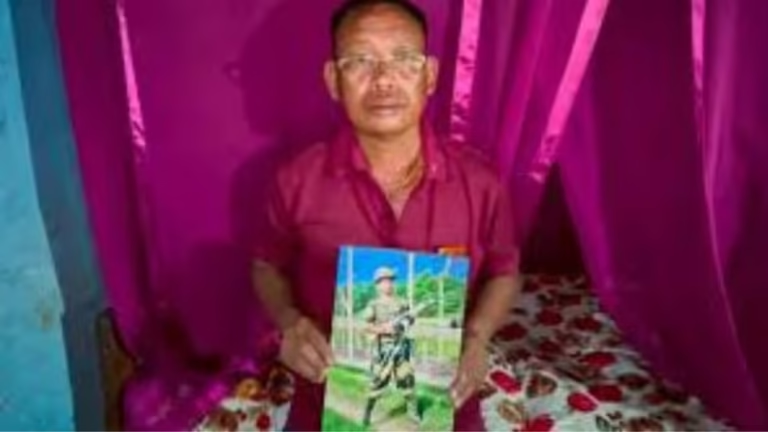Manipuri Student Alleges Harassment by Cab Driver, Victim Criticizes Delhi Police Response
Summary
A recent incident in Delhi has sparked outrage as a Manipuri student alleged that she was harassed by a cab driver. The student, who is from the northeastern state of Manipur, voiced concerns about the lackluster response from the Delhi police following the event. This incident has drawn attention to ongoing issues of racial discrimination and the vulnerability that people from the northeastern regions of India often face when living in metro cities like Delhi. The student’s outcry is a powerful reminder of the need for better safety measures and police accountability.
The Incident: Harassment Allegations in a City of Millions
Imagine being far from home, navigating a bustling city like Delhi, when suddenly, you’re thrust into a situation that leaves you feeling vulnerable and unsafe. This is the reality that one Manipuri student faced when she experienced harassment by a cab driver on her way home. Living in a city that prides itself on its diversity and metropolitan vibrancy, one would hope for a sense of security. But for many from India’s northeastern states, the experience can be quite different.
On October 13, 2024, a student from Manipur alleged that she was harassed by a cab driver while traveling in Delhi. The distressing incident took place when the driver allegedly behaved inappropriately and made her feel unsafe. As if the traumatic experience wasn’t enough, the victim claimed that the Delhi police’s response left much to be desired, further intensifying her frustration and helplessness.
Racial Discrimination in Metro Cities: An Ongoing Struggle
It’s not just about this one student, but a larger issue that people from the northeastern region of India, like those from Manipur, often face when they move to metro cities like Delhi. Racial discrimination, microaggressions, and stereotyping are common experiences for those who migrate to cities for education or work. These cities, often heralded as cosmopolitan and inclusive, can sometimes present harsh realities for people who don’t conform to the mainstream image of what “Indian” looks like.
Stereotyping and Prejudice: People from the northeast are often mistaken as “outsiders” due to their distinct physical features, language, and culture. This leads to many feeling alienated or marginalized. In this particular incident, the student’s background as someone from the northeast might have compounded her sense of vulnerability.
Cultural Misunderstandings: Cultural misunderstandings and ignorance further fuel these prejudices. The northeast has a rich, diverse heritage, but many in metro cities know little about it. This lack of awareness can lead to discriminatory behavior, intentional or otherwise.
The Role of Police: Where’s the Accountability?
One of the most alarming parts of this case is not just the harassment but the alleged response by the Delhi police. After the incident, the student sought help from the police, but according to her, the officers’ response was inadequate. The student’s account sheds light on an issue that’s all too familiar for many: police apathy.
Delayed Action: She claims that the police did not take her complaint seriously, which points to a larger issue of how crimes related to harassment and discrimination are often handled with laxity. Delays in taking action or not giving due importance to the victim’s account can worsen the trauma and make victims feel even more powerless.
The Need for Sensitivity: It’s not just about filing reports and taking down complaints. There’s a growing need for sensitivity training within the police force, especially when dealing with cases involving vulnerable communities. The student’s allegations against the Delhi police resonate with the experiences of many, particularly women and minorities, who often feel that their complaints are dismissed or not given the priority they deserve.
The Emotional Toll: Feeling Unsafe in Your Own Country
The incident has sparked conversations about the emotional toll of being a minority in your own country. Imagine being a student, thousands of kilometers away from home, in a city as massive and complex as Delhi, only to be made to feel like an outsider or unsafe. For students like this Manipuri victim, the emotional toll can be enormous.
Isolation and Fear: Many from the northeast move to cities like Delhi for better education and job opportunities, but with incidents like these, a sense of isolation and fear can set in. Imagine going about your daily routine, but constantly feeling like you’re being watched or judged, or even fearing for your safety when using public transportation.
Mental Health Impact: The mental health impact of such incidents cannot be overstated. Continuous exposure to harassment, whether overt or subtle, combined with a lack of adequate support systems, can lead to stress, anxiety, and depression.
What Needs to Change: Steps Forward
This incident should serve as a wake-up call for authorities and society at large. Racial discrimination, harassment, and poor police responses are not just the problems of those who face them directly—they reflect broader societal issues that need to be addressed.
- Better Policing Practices: The Delhi police, and law enforcement agencies across India, need to adopt more victim-friendly practices. Sensitivity training should be a key part of police training programs, ensuring that officers are well-equipped to handle such cases with the care and seriousness they deserve.
- Public Awareness Campaigns: There needs to be more awareness around the cultural diversity of India, particularly the northeastern states. Misunderstandings and ignorance fuel prejudice, and it’s high time the media and educational institutions played a bigger role in bridging this knowledge gap.
- Empowering Students from the Northeast: Educational institutions in cities like Delhi should provide support systems for students from the northeast, including helplines, counseling, and legal assistance. This would make students feel more secure and empowered when dealing with challenging situations.
- Legal Reforms: There need to be stricter laws and regulations in place to deal with racial discrimination and harassment. Although laws exist to protect against harassment, enforcement needs to be stronger and more consistent, particularly for minority communities.
- Community Building: Cities like Delhi need more community-driven initiatives that bring together people from different cultural backgrounds. Events, workshops, and community centers that celebrate the northeast’s culture and history could foster a better understanding and mutual respect among the city’s diverse population.
Conclusion: A Call for Change
The harassment faced by the Manipuri student in Delhi is a tragic reminder of the challenges that minorities often face in India’s metropolitan cities. Racial discrimination, combined with ineffective police responses, paints a grim picture of safety and inclusivity. But it’s also an opportunity—a chance to push for systemic changes, more awareness, and better support systems for vulnerable communities.
No one should feel unsafe in their own country, and incidents like these highlight the need for empathy, understanding, and action. Whether it’s through improved policing, awareness campaigns, or simply fostering more inclusive attitudes, the goal should be to make cities like Delhi truly representative of the diverse and pluralistic nation that India is.
FAQs
- What exactly happened to the Manipuri student in Delhi?
- A Manipuri student was allegedly harassed by a cab driver in Delhi. She also criticized the Delhi police for their inadequate response.
- Why are incidents like this significant?
- Such incidents highlight the racial discrimination and harassment faced by people from northeastern states in metropolitan cities like Delhi.
- What did the student say about the police response?
- The student claimed that the Delhi police did not take her complaint seriously, which has raised concerns about police apathy in such cases.
- How common is racial discrimination against people from the northeast in India?
- Unfortunately, racial discrimination against people from the northeast is relatively common in many metro cities, with frequent reports of harassment and prejudice.
- What can be done to prevent such incidents in the future?
- Improved policing, awareness campaigns, legal reforms, and support systems for northeastern communities in metro cities are some of the steps that could help prevent such incidents.



